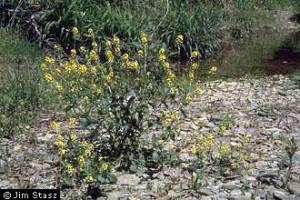Field mustard has been cultivated for over 4,000 years.
Photo Credit: © Jim Stasz, USDA-NRCS PLANTS Database.
Brassica rapa
Common Name: field mustard
Other Common Names: bird's rape, birdsrape mustard, rape, rape mustard, turnip rape, wild mustard, wild rutabaga, wild turnip
Plant Functional Group: Forb
Class > Order > Family: Magnoliopsida > Brassicales > Brassicaceae
